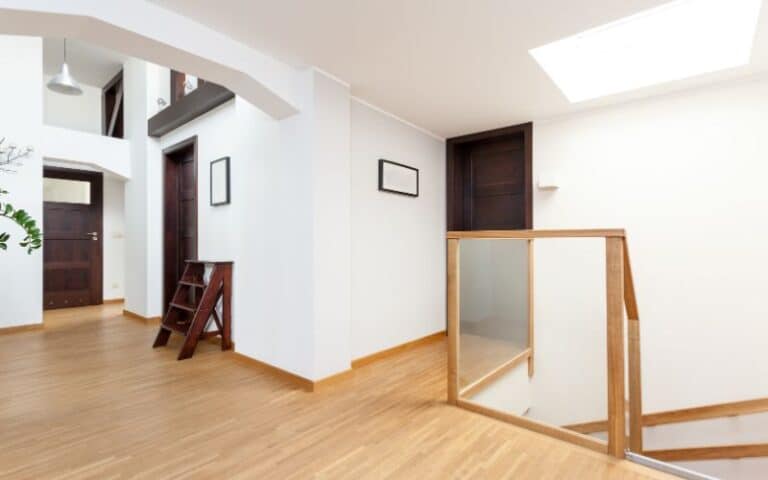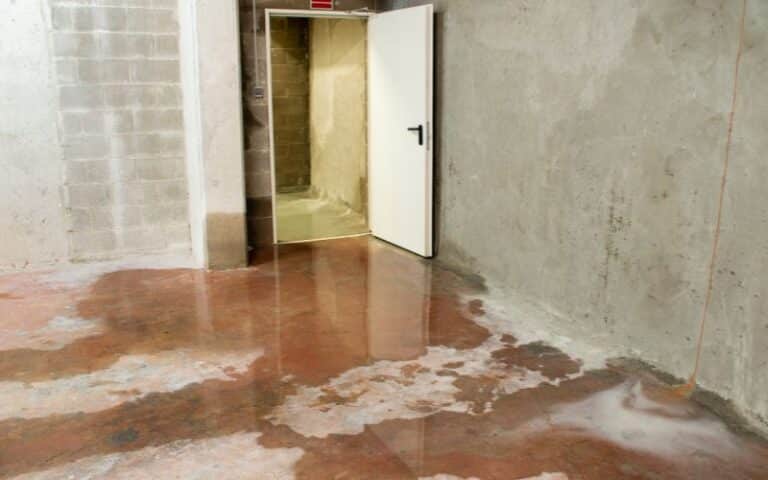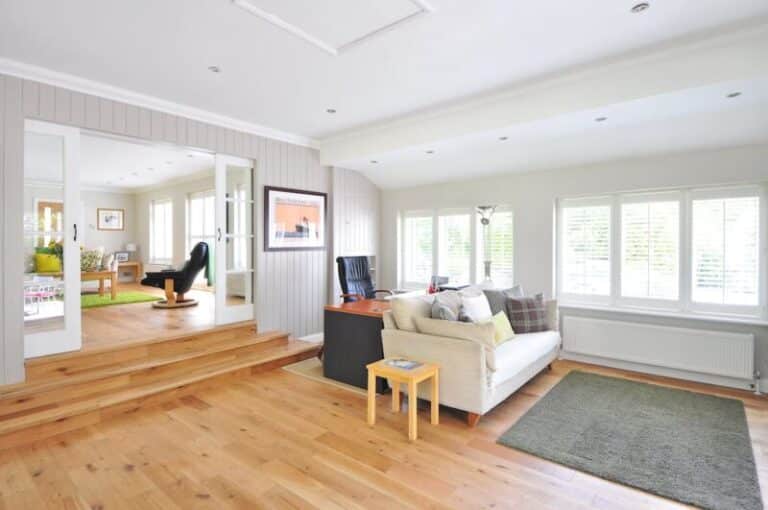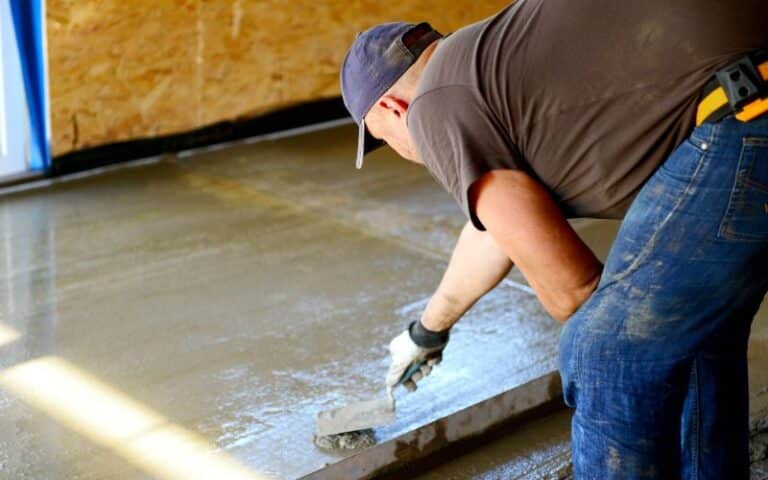Sheds are not built with their floors, so you’ll need to conduct adequate research to find the best flooring material for your shed.
You can use plywood or OSB (Oriented Strand Board) for your shed floors, but you’ll need to be certain that you’ve picked the best option.
If you’re wondering which flooring best suits your shed floor between OSB and plywood, you’ll find the right answer here.
For several reasons, pressure-treated plywood is better suited for constructing raised shed floors than treated OSBs. These reasons include its remarkable compressional strength, ability to withstand moisture, availability, durability, and rigidity. Furthermore, these features are integral for building a long-lasting shed floor that can support many weighted goods or storage boxes.
In this article, I’ll explain which option is best suited for raised shed floors between OSBs and pressure-treated plywood.
By the end, you’ll know if pressure-treated plywood is more durable than OSB in flooring, which is mold resistant and which is more expensive.
Ready for a Flooring Quiz?
OSB Vs. Pressure Treated Plywood: Which is Best for a Raised Shed Floor?
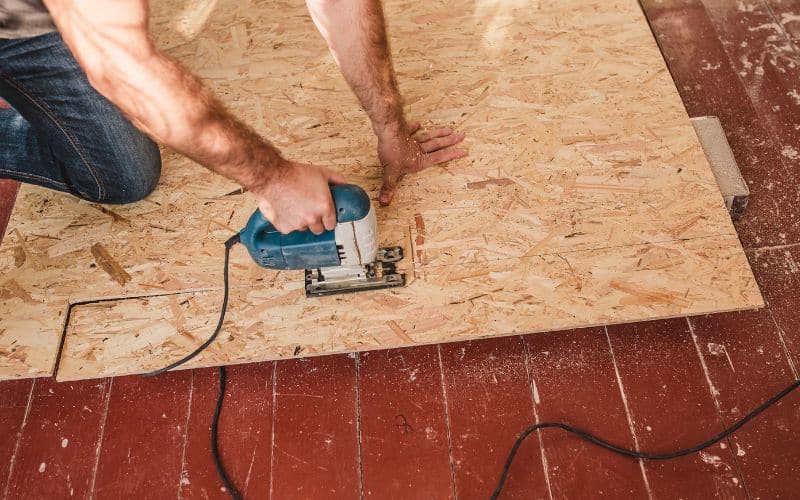
Pressure-treated plywood is undoubtedly the best wood for constructing a raised shed floor compared to OSB.
There is a mountain of reasons why pressure-treated plywood is the best option despite how good OSB is.
However, the most important reasons that make pressure-treated plywood stand out include its amazing compressional strength, pest and water-resistant nature, and durability.
While OSB is affordable, durable, and easily available, it lacks the strength and moisture resistance required for a raised shed floor.
The reasons why pressure-treated plywood is best suited for a raised shed floor than OSB are explained below;
#1. Pressure Treated Plywood is Bacteria and Fungi-Resistant
Sheds are usually packed with various storage items and left locked up until the next time it’s needed.
In most cases, bacteria and fungi are attracted to the storage boxes because they are not cleaned out regularly like the interior of your home.
Pressure-treated plywood can be a preventive material against fungi and bacteria because it is made with rot-resistant preservatives.
This distinct feature allows it to fight off bacteria and fungi from the boxes or the environment that is targeted at causing wood rot.
Also, pressure-treated plywood prevents rotting and decaying when water mistakenly spills on your shed, leaving it damp.
The chemicals it is treated with also make it resistant to insect damage, unlike other types of wood.
However, OSBs do not share this advantage, so they can rot and decay easily when exposed to moisture and bacteria.
#2. Pressure Treated Plywood has a Remarkable Compressional Strength
OSBs are known to boast of their amazing shear strength, which easily doubles that of pressure-treated plywood.
However, pressure-treated plywood boasts double OSB’s compressional strength, which is of more importance.
This is because sheds hold heavy storage items for long periods, so they require wooden floors with more compressional than shear strength.
For emphasis on their strength differences, pressure-treated plywood can accommodate 5000 lbs of pressure per square inch, while OSBs can only handle 2500 lbs.
Therefore the compressional strength of pressure-treated plywood easily makes it the best-suited wood for constructing a raised shed.
#3. Pressure Treated Plywood is More Durable than OSB
The possibility of exposure to moisture and other unfavorable conditions in a shed makes pressure-treated plywood the best option.
Unlike OSB, its layers are glued with a water-resistant adhesive that prevents early damage and keeps moisture and humidity.
Pressure-treated plywood is also less likely to sag after being dampened by moisture, unlike OSB, which doesn’t have a water-resistant feature.
Asides from the reasons highlighted above, the other differences between pressure-treated plywood and OSB are shown in the table below;
| Oriented Strand Boards | Pressure Treated Plywood |
|---|---|
| They are prone to producing loud squeaks. | They are sturdy and hardly cause squeaks. |
| They are cost-friendly. | They are more expensive than OSB. |
| They are less resistant to moisture. | They have a high tolerance for moisture. |
| They are perfect for installations that require wide panels. | Their manufacturing length is limited to 8/10 feet. |
| They can’t hold as much weight as plywood. | They can hold a vast amount of weight. |
| They aren’t used for outdoor projects because moisture makes them swell. | They can be damaged from continuous exposure to moisture. |
| They take longer to get wet when exposed to moisture. | They get wet easily but dry out quickly. |
Is OSB Stronger than Pressure Treated Plywood?
Pressure-treated plywood is much stronger than OSB because of the different types of wood used in manufacturing them.
OSB is made from small diameters of aspen and poplar trees bonded professionally with a waterproof adhesive.
The wood types used to manufacture OSB are also known as softwood strands because they are not as strong as hardwood.
In addition, this means that OSB excels in shear strength but doesn’t have enough compressional strength to hold heavy weights.
On the other hand, pressure-treated plywood is made from mild lumber like cedar or pine, which is soaked in chemicals for the result.
It is also made by layering thick wood veneers to increase its strength and give it a smoother surface than OSB.
Pressure-treated plywood looks thinner when placed beside OSB but has greater compressional strength, making it an ideal choice.
Is Pressure Treated Plywood More Durable than OSB in Flooring?
Pressure-treated plywood is more durable than OSB for flooring because it is an advanced version of plywood.
Ordinary or untreated plywood is considered the best-suited option for sub-flooring because of its commendable strength.
Plywood, in general, is made from strong layers of wood, making it an amazing choice for any flooring.
However, pressure-treated plywood has changed the game because it has advanced features such as pest and moisture resistance and remarkable strength.
Asides from that, it is also manufactured to be smoother than other wood types, which makes it pleasant underneath the feet.
Floors made from pressure-treated plywood are also stiffer than OSB floors, making them less likely to squeak no matter how a person walks.
Additionally, nails and screws tend to remain firmly in place on floors made using pressure-treated plywood than OSB floors.
On the other hand, OSB is not as strong as pressure-treated wood, so it might not last as long as expected.
It can also get swollen or mold-infested when exposed to bacteria or moisture, so it might not be a great flooring material for homes.
However, you can use OSB for flooring and plywood for the sub-floors in a building less likely to suffer from constant exposure to moisture.
This way, you’ll save money and maximize both of their benefits during the construction process.
Which is More Mold Resistant, OSB, or Pressure Treated Plywood?
Pressure-treated plywood is more resistant to mold than OSB because they are specifically altered to be water-resistant.
On the other hand, OSB is not an advisable wood to use in moisture-prone areas because it allows mold growth when it gets damp.
Luckily, there’s an easy remedy to remove the mold on your OSB; you only need a concentrated enzyme mold cleaner to scrub it.
Also, since pressure-treated plywood is manufactured using a chemical that helps it fight bacteria, fungi, and pests, mold rarely grows on it.
However, on the rare occasions when you spot mold on it, it’s caused by prolonged exposure to water and not a fungal attack.
You can also easily wash it off by scrubbing it with a stiff brush that you’ve dipped in a mild soap and water solution.
OSB Vs. Pressure Treated Plywood for Raised Shed Floor: Which is More Expensive?
Pressure-treated plywood is significantly more expensive than OSB, which boasts of its affordability.
The average cost of OSB is $3 per panel, while pressure-treated plywood costs $5 or more, which makes it more costly to use in construction.
For example, you’ll spend $700 less if you’re building a home that is 2,400 square inches using OSB instead of pressure-treated plywood for the woodwork.
Frequently Asked Questions
Does Shed Floor Need to be Pressure Treated?
Pressure-treated wood is the best for shed floors because it lasts longer and wards off insects, moisture, and mold infestations.
What is the Best Plywood for a Shed floor?
The best plywood for a shed floor is pressure-treated because it is strong, bacteria-resistant, and easy to sweep and paint.
How Long Do OSB Floors Last?
OSB floors protected from moisture, mold, paint, and other unfavorable conditions can last over 30 years.

